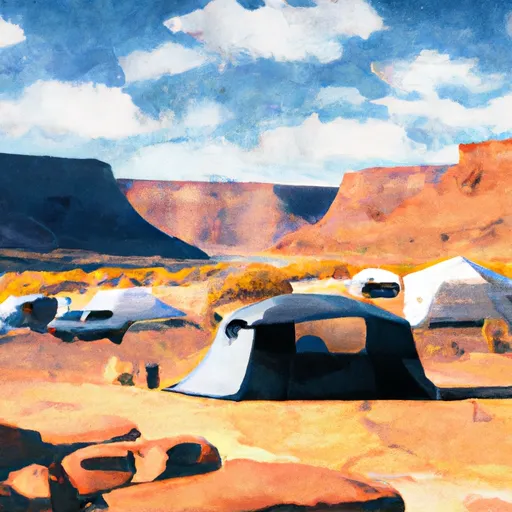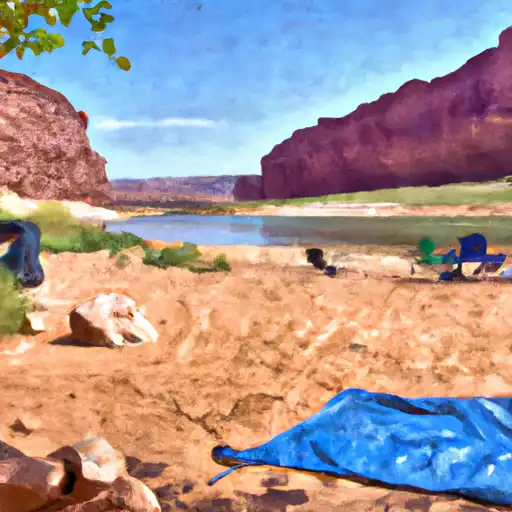Summary
The area spans over 1.25 million acres and includes Lake Powell, the second-largest man-made reservoir in the United States. Visitors can enjoy a variety of activities such as boating, fishing, hiking, camping, and kayaking. The park is also home to several historic sites such as the Rainbow Bridge National Monument and the Navajo Bridge Interpretive Center.
Some of the specific points of interest to see in Glen Canyon National Recreation Area include the Horseshoe Bend, Antelope Canyon, and the Glen Canyon Dam. Horseshoe Bend is a popular destination for its stunning viewpoint overlooking the Colorado River. Antelope Canyon offers a unique experience for visitors to explore the twisting sandstone walls and colorful light beams. The Glen Canyon Dam provides a chance to learn about the history and construction of the dam and its importance in providing water and power to the southwest.
Interesting facts about the area include the fact that the construction of the Glen Canyon Dam created Lake Powell, which stretches over 180 miles and has a shoreline of over 2,000 miles. The park is also home to over 300 species of birds and is a popular destination for bird watching. Additionally, the Rainbow Bridge National Monument is one of the largest natural bridges in the world, measuring 290 feet tall and 270 feet wide.
The best time of year to visit Glen Canyon National Recreation Area is during the spring and fall months when temperatures are mild and crowds are smaller. Summers can be hot, with temperatures reaching over 100 degrees. However, summer is also peak season for recreational activities such as boating and fishing. Winter months can be cold, but visitors can still enjoy hiking and exploring the area without the crowds.
In summary, Glen Canyon National Recreation Area is a must-visit destination in Arizona for its stunning natural landscape, recreational activities, and historic sites. Visitors can explore the unique sandstone formations, enjoy water activities on Lake Powell, learn about the history of the area, and observe a variety of wildlife. The best time of year to visit is during the spring and fall months, but visitors can still enjoy the park year-round.
Weather Forecast
Park & Land Designation Reference
Large protected natural areas managed by the federal government to preserve significant landscapes, ecosystems, and cultural resources; recreation is allowed but conservation is the priority.
State Park
Public natural or recreational areas managed by a state government, typically smaller than national parks and focused on regional natural features, recreation, and education.
Local Park
Community-level parks managed by cities or counties, emphasizing recreation, playgrounds, sports, and green space close to populated areas.
Wilderness Area
The highest level of land protection in the U.S.; designated areas where nature is left essentially untouched, with no roads, structures, or motorized access permitted.
National Recreation Area
Areas set aside primarily for outdoor recreation (boating, hiking, fishing), often around reservoirs, rivers, or scenic landscapes; may allow more development.
National Conservation Area (BLM)
BLM-managed areas with special ecological, cultural, or scientific value; more protection than typical BLM land but less strict than Wilderness Areas.
State Forest
State-managed forests focused on habitat, watershed, recreation, and sustainable timber harvest.
National Forest
Federally managed lands focused on multiple use—recreation, wildlife habitat, watershed protection, and resource extraction (like timber)—unlike the stricter protections of national parks.
Wilderness
A protected area set aside to conserve specific resources—such as wildlife, habitats, or scientific features—with regulations varying widely depending on the managing agency and purpose.
Bureau of Land Management (BLM) Land
Vast federal lands managed for mixed use—recreation, grazing, mining, conservation—with fewer restrictions than national parks or forests.
Related References
Area Campgrounds
| Location | Reservations | Toilets |
|---|---|---|
 Lee's Ferry Campground
Lee's Ferry Campground
|
||
 Lees Ferry Campground
Lees Ferry Campground
|
||
 Lees Ferry - Glen Canyon Area
Lees Ferry - Glen Canyon Area
|
